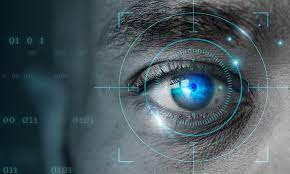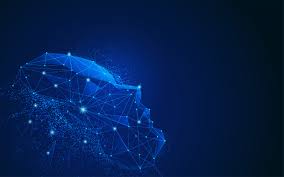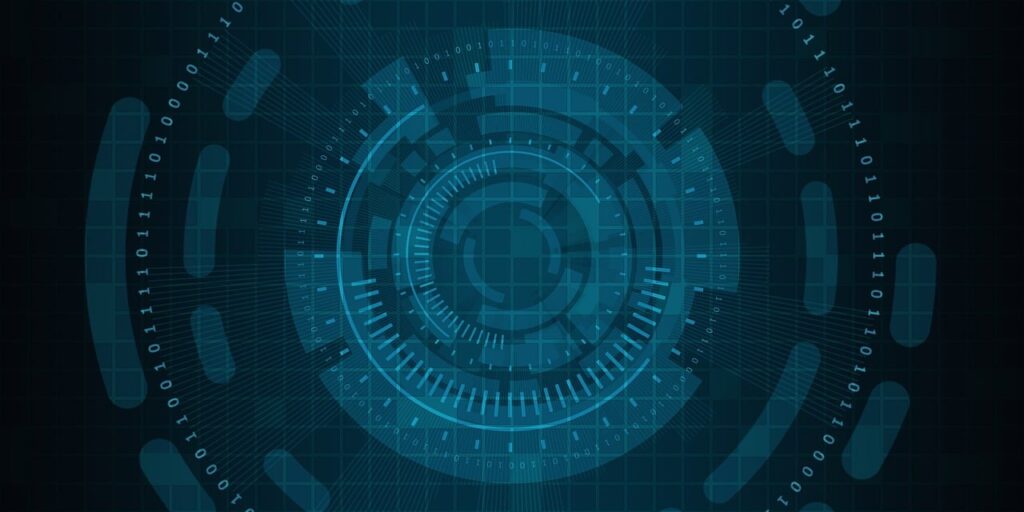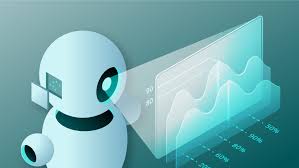Discover the Best Free Image Datasets for Computer Vision: 22 Must-Have Resources

Computer vision is a rapidly growing field that has revolutionized the way machines interact with the world. It involves training machines to recognize and interpret visual data, such as images and videos, and make decisions based on that data. To train these algorithms, developers need access to large quantities of high-quality image data. Fortunately, there are many free image datasets available that can be used for this purpose. In this article, we will explore the best free image datasets for computer vision, their benefits, and how to use them.
Introduction to Image Datasets for Computer Vision
Image datasets are collections of images that are used to train artificial intelligence and machine learning models. These datasets can include images of objects, people, animals, landscapes, and more. In computer vision, image datasets are used to train algorithms to recognize and classify objects in images, detect faces, and even identify emotions. The more diverse and high-quality the dataset, the better the algorithm will perform.
Importance of Using Image Datasets in Computer Vision
Using image datasets is essential to the success of computer vision projects. Without access to high-quality image data, developers would need to manually label and annotate thousands of images themselves, which would be a time-consuming and costly process. By using free image datasets, developers can save time and resources and focus on building better algorithms.
Types of Image Datasets for Computer Vision
There are several types of image datasets that can be used for computer vision, including:
Object Recognition Datasets
Object recognition datasets are used to train algorithms to identify specific objects in images. These datasets can include images of common objects, such as cars, bicycles, and animals, as well as more specific objects, such as medical equipment or industrial machinery.
Face Detection Datasets
Face detection datasets are used to train algorithms to detect and recognize human faces in images. These datasets can include images of people in different poses, lighting conditions, and with different facial expressions.
Emotion Recognition Datasets
Emotion recognition datasets are used to train algorithms to recognize emotions in human faces. These datasets can include images of people displaying different emotions, such as happiness, anger, sadness, and surprise.

Benefits of Using Free Image Datasets
Using free image datasets has several benefits for computer vision projects, including:
Cost Savings
One of the most significant benefits of using free image datasets is the cost savings. Developing a high-quality image dataset from scratch can be a time-consuming and costly process. By using free image datasets, developers can save time and resources and focus on building better algorithms.
Diversity
Free image datasets often contain a diverse range of images that can help improve the performance of computer vision algorithms. This diversity can include images of different objects, people, and landscapes in different lighting conditions and from different angles.
Accessibility
Free image datasets are often readily accessible, meaning developers can quickly download and start using them in their projects. This accessibility can help speed up the development process and improve the quality of the final product.
Top 22 Free Image Datasets for Computer Vision
There are many free image datasets available for computer vision. Here are the top 22 must-have resources:
Dataset 1: CIFAR-10
CIFAR-10 is a collection of 60,000 images of 10 different classes, including airplanes, cars, birds, and cats. The dataset is often used to train and test image classification algorithms.
Dataset 2: ImageNet
ImageNet is a large-scale dataset of over 14 million images, organized according to the WordNet hierarchy. The dataset is often used to train and test object recognition algorithms.
Dataset 3: Open Images Dataset
The Open Images Dataset is a collection of over 9 million images, annotated with object labels. The dataset is often used to train and test object detection algorithms.
Dataset 4: COCO
COCO is a large-scale dataset of over 330,000 images, annotated with object labels, object segments, and captions. The dataset is often used to train and test object detection, segmentation, and captioning algorithms.
Dataset 5: MNIST
MNIST is a collection of 70,000 handwritten digits, used to train and test image classification algorithms.
Dataset 6: Fashion-MNIST
Fashion-MNIST is a collection of 70,000 images of clothing items, used to train and test image classification algorithms.
Dataset 7: PASCAL VOC
PASCAL VOC is a collection of images and annotations, used to train and test object detection and segmentation algorithms.
Dataset 8: SUN Database
The SUN Database is a collection of over 130,000 images, annotated with scene categories and attributes. The dataset is often used to train and test scene recognition algorithms.
Dataset 9: Labeled Faces in the Wild
Labeled Faces in the Wild is a collection of over 13,000 images of faces, annotated with the names of the people in the images. The dataset is often used to train and test face recognition algorithms.
Dataset 10: CelebA
CelebA is a collection of over 200,000 images of celebrity faces, annotated with facial landmarks and attributes. The dataset is often used to train and test face recognition and attribute prediction algorithms.
Dataset 11: WIDER FACE
WIDER FACE is a collection of over 32,000 images of faces, annotated with bounding boxes and landmarks. The dataset is often used to train and test face detection algorithms.
Dataset 12: MS COCO Captions
MS COCO Captions is a collection of over 330,000 images, annotated with captions. The dataset is often used to train and test image captioning algorithms.
Dataset 13: Malaria Cell Images Dataset
The Malaria Cell Images Dataset is a collection of over 27,000 images of malaria-infected and uninfected blood cells. The dataset is often used to train and test image classification algorithms.
Dataset 14: Caltech-101
Caltech-101 is a collection of over 9,000 images of objects, organized into 101 categories. The dataset is often used to train and test object recognition algorithms.
Dataset 15: Caltech-256
Caltech-256 is a collection of over 30,000 images of objects, organized into 256 categories. The dataset is often used to train and test object recognition algorithms.
Dataset 16: Stanford Dogs
The Stanford Dogs dataset is a collection of over 20,000 images of dogs, organized into 120 breeds. The dataset is often used to train and test dog breed classification algorithms.
Dataset 17: Oxford Flowers
The Oxford Flowers dataset is a collection of over 8,000 images of flowers, organized into 102 categories. The dataset is often used to train and test flower classification algorithms.
Dataset 18: EuroSAT
EuroSAT is a collection of over 27,000 images of land use and land cover, organized into 10 categories. The dataset is often used to train and test land use classification algorithms.
Dataset 19: BSDS500
The Berkeley Segmentation Dataset and Benchmark (BSDS500) is a collection of over 500 images, annotated with boundary and segmentation maps. The dataset is often used to train and test image segmentation algorithms.
Dataset 20: Cityscapes
Cityscapes is a collection of over 5,000 images of urban street scenes, annotated with pixel-level semantic labels. The dataset is often used to train and test semantic segmentation algorithms.
Dataset 21: KITTI
KITTI is a collection of over 14,000 images of street scenes, recorded from a moving vehicle. The dataset is often used to train and test object detection and tracking algorithms.
Dataset 22: NYU Depth V2
NYU Depth V2 is a collection of over 1,400 RGB-D images, annotated with depth maps and semantic labels. The dataset is often used to train and test depth estimation and semantic segmentation algorithms.
How to Download and Access Free Image Datasets
Downloading and accessing free image datasets is relatively straightforward. Most datasets are available for download from the internet and can be accessed using a programming language such as Python. Here are the basic steps to download and access a free image dataset:
Identify the dataset you want to use.
Download the dataset from the internet.
Extract the dataset files to your local computer.
Use a programming language such as Python to access the dataset and load the images into memory.
Tips for Effectively Using Free Image Datasets in Computer Vision Projects
Using free image datasets can be a powerful tool for computer vision projects. However, there are some tips to keep in mind to ensure the best results:
Choose the Right Dataset
Choosing the right dataset for your project is critical. Consider the type of algorithm you are developing and the types of images that will be used in your application.
Preprocess the Dataset
Preprocessing the dataset can help improve the performance of your algorithm. This can include tasks such as resizing images, converting them to grayscale, or applying image augmentation techniques.
Use Data Augmentation
Data augmentation techniques can be used to increase the size of your dataset and improve the performance of your algorithm. This can include techniques such as flipping, rotating, cropping, or adding noise to the images.
Challenges and Limitations of Free Image Datasets
While free image datasets can be a powerful tool for computer vision projects, there are some challenges and limitations to keep in mind:
Limited Quantity
Free image datasets may not contain enough images to train a high-quality algorithm. In some cases, developers may need to combine multiple datasets or supplement them with their own data.
Limited Quality
Free image datasets may not always meet the quality standards required for some applications. Images may be low resolution, poorly labeled, or contain errors.
Licensing
Free image datasets may come with licensing restrictions that limit their use in commercial applications.
Alternatives to Free Image Datasets
While free image datasets can be a powerful tool for computer vision projects, there are some alternatives to consider:
Paid Image Datasets
Paid image datasets can often provide higher quality images and more extensive labeling than free image datasets. However, they can be expensive and may not be accessible to everyone.
Self-Generated Images
Developers can generate their own image datasets by taking pictures or recording videos. This can be time-consuming but can provide more control over the quality and diversity of the images.
Conclusion
Free image datasets are a valuable resource for developers working on computer vision projects. They can save time and resources and provide access to high-quality image data to train algorithms. By choosing the right dataset, preprocessing the data, and using image augmentation techniques, developers can improve the performance of their algorithms. However, there are some challenges and limitations to keep in mind, and alternatives such as paid image datasets or self-generated images may be necessary in some cases. Regardless of the approach, using image datasets is essential to the success of computer vision projects.
For more contents visit:
Building a Strong Foundation: How to Choose the Best Image Dataset for Python-based Projects
Unveiling the Holy Grail: Discover the Best Image Dataset for Machine Learning

